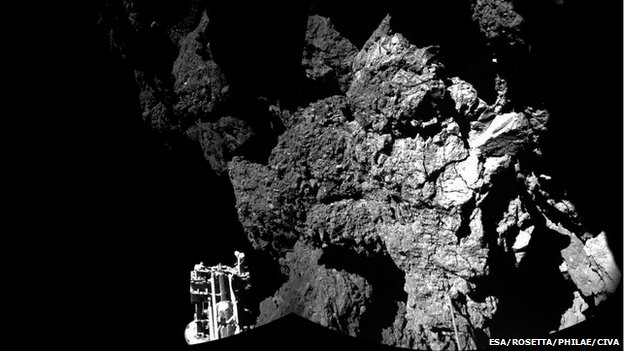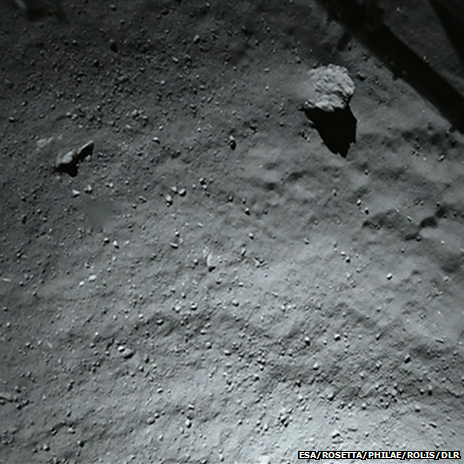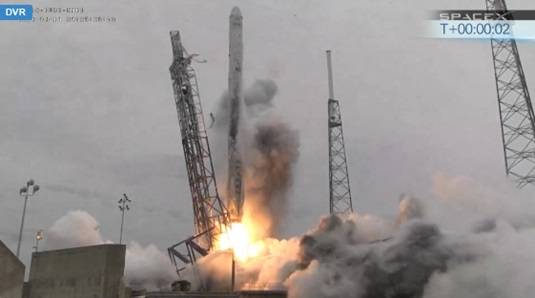Charles Stross explains several SF novel shibboleths that make him want to hurl the book against the nearest wall, including so many “war in space” stories:
Newton’s Second Law, for dummies. E = 1/2 * (mv2) — it’s not just a good idea, it’s the law. Notice the huge distances I alluded to above? Well, to get between planet A and planet B in anything approximating reasonable human time spans, you need to go fast. And if you go fast, your velocity relative to the bodies around you is also high. In event of an inelastic collision the kinetic energy transfer is proportional to the square of your velocity; and this has drastic consequences for space ships. Suppose you’re in low Earth orbit and you hit a piece of space junk, for example a screw that’s fallen off someone else’s ship. It’s traveling in pretty much the same orbit as you, but inclined at 30 degrees. What happens? What happens is you get a happy fun experience much like being hit by a bullet from a high-calibre sniper’s rifle, because (I can’t be bothered to do the trig here) it’s packing a velocity component angled across your path at a goodly fraction of orbital velocity, and at orbital velocity a kilogram of water packs kinetic energy equal to about ten times its mass in exploding TNT.
You know what a high-speed car crash looks like, right? Space ships travel a lot faster than that: if they hit something, it’s going to be very messy indeed. And that’s at sluggish orbital velocities; if you starship is barreling along at about 85% of the speed of light general relativity has something to say on the subject and it’s kinetic energy is equal to about half it’s rest mass — the equivalent of a 10 megaton hydrogen bomb for every kilogram of hull weight. (The pilot’s space-suited body alone packs the energetic punch of a Peak Strangelove 1980s USA/USSR strategic nuclear exchange.)
Human bodies are basically squishy sacks of goopy grease and water emulsions held together by hydrogen bonds and disulphide bridges between protein molecules and glommed onto some big lumps of high-grade chalk. We evolved in a forgiving, water-dominated low-velocity world where evolution didn’t bequeath us nervous systems able to comprehend and deal with high energy interactions other than in an “ooh, that lightning bolt was close! Where’s cousin Ugg?” kind of way. We can’t even see objects that flash across our visual field in less than 50 milliseconds — a duration in which, at orbital velocity, an object will have travelled on the order of half a kilometer.
Intuition and high energy regimes: do the math, or your space combat will be a whole bundle of nope.
(Other related cognitive errors include but are not limited to: Napoleonic navies clashing in space and firing broadsides back and forth at one another’s line of battle … spaceships with continuous high acceleration fusion-powered motors or similar that don’t glow white-hot then melt because vacuum is an insulator and shedding that much heat is a hard engineering problem (hint: a 100 ton spaceship accelerating at 1g requires 1 megaJoule of thrust: using a photon rocket for maximum efficiency that’s going to require 3 x 1015 watts of juice going in, if it’s 99.9% effective at heat dissipation that means it’s racking up around three terawatt of leakage, and that’s equivalent to about 45 kilotons of nuclear explosions per minute of waste heat) … warships using active radar to hunt for one another (hint: active sensor reach is inversely proportional to the fourth power of the emission strength, passive sensors obey the inverse square law) … warships using stealth in space (hint: infrared emissions, second hint: the background temperature you want to avoid standing out against is 2.73 degrees Kelvin, i.e. liquid Helium temperature) …
Oh for fuck’s sake, don’t get me started on war in space, we’ll be here forever unless we just throw physics to the winds of fiction and delegate all our hand-waving to magic hyperspace or cyberspace technology or something.






